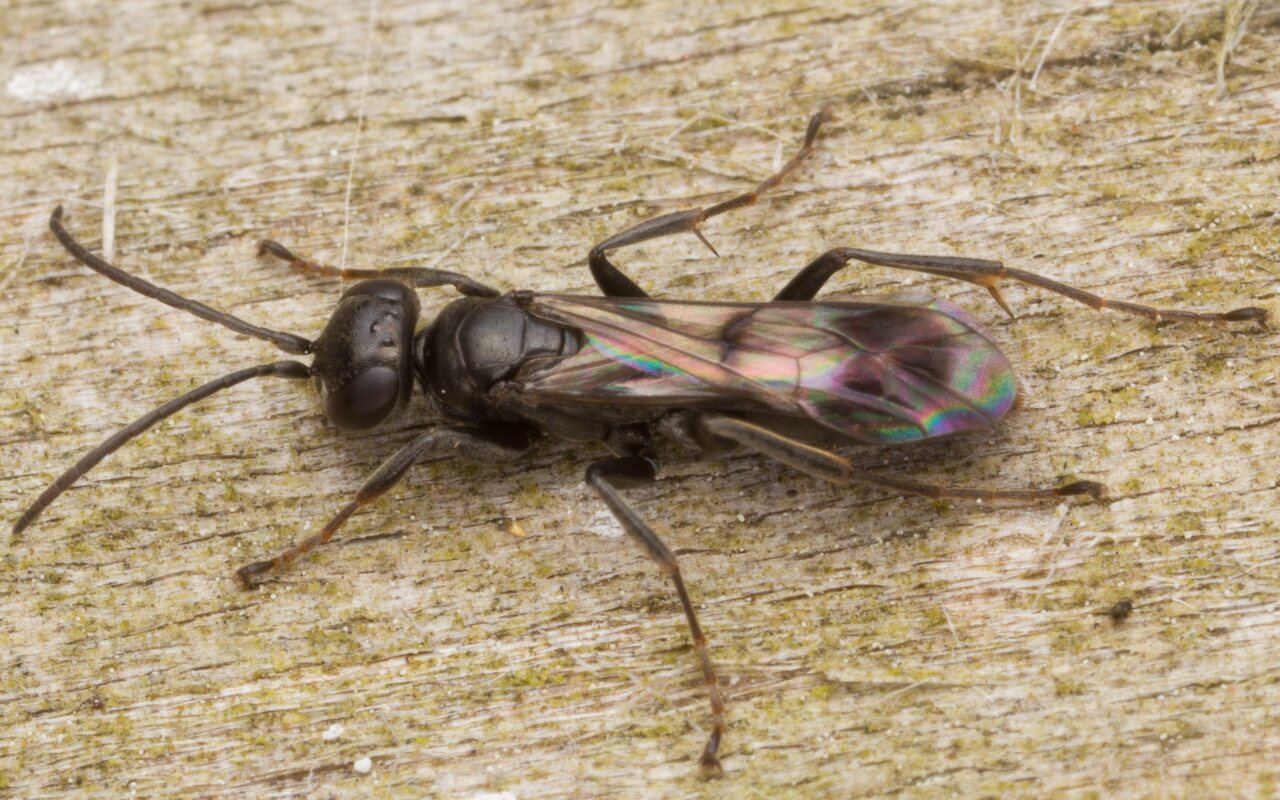3/4

Dipogon bifasciatus · dvijuostė voravapsvė
- Deuteragenia bifasciata
- Kale baardspinnendoder
- dvijuostė voravapsvė
- treveiveps
- upieńka drewniarka
These spider wasps are found through Europe to Russia and on to Japan. In Europe, the southern limits are in Italy and Bulgaria. They are found in open wooded areas such as forest edge, scrub, orchards and vineyards, gardens. An all-black species with bifasciate wings, the generic name, Dipogon "two beards", refers to the tufts of forward-pointing bristles on the maxilla of the female, the purpose of which is to pack the nest entrance with old spider silk. Females grow to 5–9 mm in length, and males 4–7 mm.
Dipogon bifasciatus hunts crab spiders, of the family Thomisidae. The prey are stored in cells created in old insect burrows dug into rotting wood, hollow stems and cracks in walls, and, unlike many other Pompilid spider wasps, these may be clustered with six cells in each burrow. A single egg is laid on each paralysed crab spider, smaller spiders host males and larger females. The nest is made up of sawdust, plant fibres and dismembered insect parts bound together with spider silk and sealed with chewed wood.‥
0 comments
Add a comment